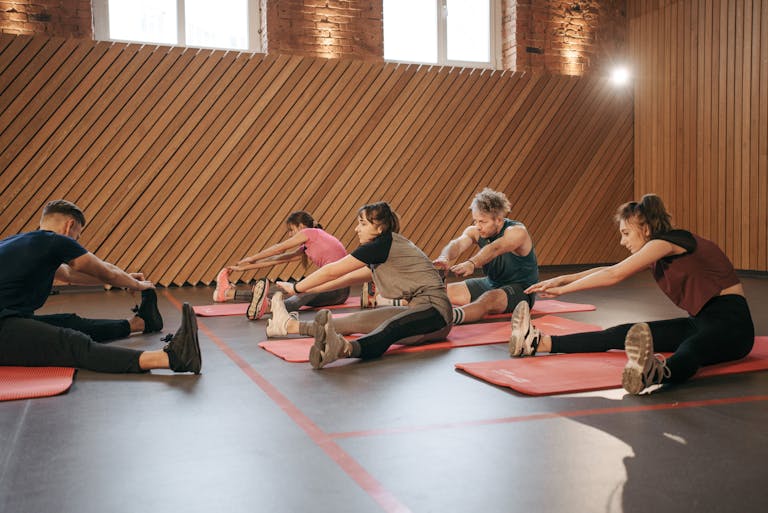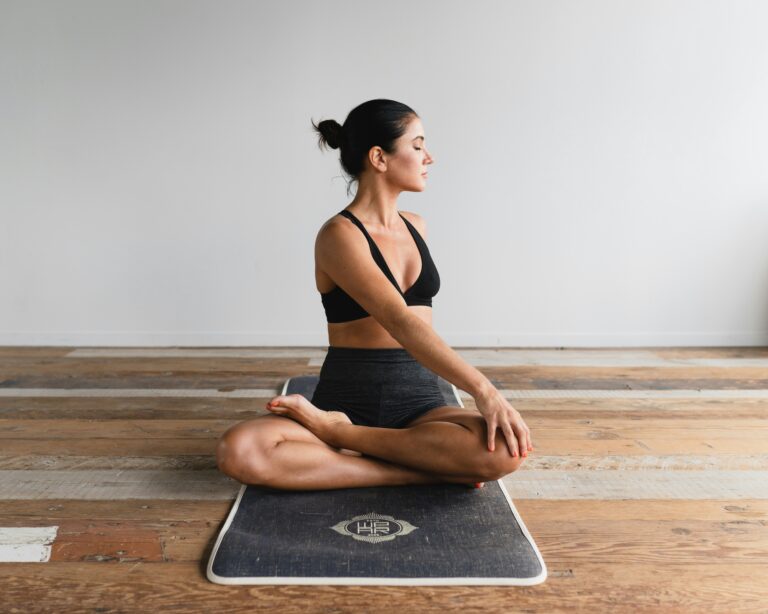Stretching seems like the obvious answer when pain hits. You wake up with a stiff back and tight shoulders after a long day at work, or muscle tension creeping in during your workout. Your first instinct? Stretch it out.
While stretching can be excellent for pain relief and flexibility, doing it wrong can make your pain worse, not better. Many unknowingly make stretching mistakes that can lead to muscle strain, increased tension, or even injury.
This guide will walk you through 7 common stretching mistakes that can sabotage your pain relief. Recognizing the most common stretching mistakes—such as repeating the same stretches without variety—can help you improve your routine and avoid muscle imbalances. You’ll learn how to identify these pitfalls, why they’re a problem, and how to do safer, more effective stretches to support your wellness journey.
What You Need to Know About Stretching and Pain Relief
Stretching serves multiple purposes in your wellness routine. When done correctly, it increases blood flow to muscles, improves range of motion, and helps release built-up tension. Proper stretching can be especially helpful for people with chronic pain conditions to manage daily discomfort and prevent stiffness.
Research supports the effectiveness of structured stretching programs for pain relief. Studies have shown that regular gentle stretching can reduce lower back pain, improve neck mobility, and decrease muscle tension. The key is understanding that stretching for chronic pain differs from stretching for athletic performance or general fitness.
Your muscles and connective tissues respond best to consistent moderate stretching, not aggressive or sporadic sessions. Safe stretching gradually encourages muscle fibers to lengthen and relax, increasing flexibility and comfort. If you have joint pain, consult a healthcare professional before starting a new stretching routine.
Stretching Techniques: Static vs. Dynamic
When it comes to stretching exercises, not all stretches are created equal. The two most common techniques—static and dynamic stretching—play different roles in your overall stretching routine and can affect your body differently.
Static Stretching
It involves holding a gentle stretch in one position for a set time, usually 15-60 seconds. This is great for increasing flexibility and lengthening tight muscles after your workout or as part of a cool-down. Classic examples are hamstring stretches with one leg extended, quadriceps stretches while standing, and gentle hip flexor stretches with your knee bent and feet flat on the floor. Static stretches help your muscles relax and gradually increase your range of motion, which is why they are a staple in flexibility exercise programs.
Dynamic Stretching
On the other hand, this one uses controlled, smooth movements to actively move your muscles and joints through their entire range of motion. These stretching exercises are best done as part of your warm-up as they increase blood flow, raise your body’s core temperature, and prepare your muscles for more intense activity.
Dynamic stretches include arm circles, leg swings, and walking lunges with your knees bent. Incorporating dynamic stretching into your routine can help prevent injuries and improve performance by priming your muscles for movement.
You must use both techniques at the correct times to get the most out of your stretching routine. Start your exercise routine with dynamic stretching to activate your muscles and joints, then finish with static stretching to promote flexibility and recovery. Knowing when and how to use static and dynamic stretching will support your body’s needs, reduce the risk of common stretching mistake,s and make your stretching routine more effective and enjoyable.
The Most Common Stretching Mistakes to Avoid
1. Overstretching Beyond Your Range of Motion
One of the most damaging stretching mistakes is overstretching beyond your current capabilities. When you force a stretch too far, you risk creating micro-tears in muscle fibers, leading to inflammation and increased pain, not relief. Overstretching can result in injured tissues that need rest and careful recovery to heal appropriately.
Your body has natural protective mechanisms that signal when you’ve reached your safe stretching limit. Sharp pain, burning sensations, or trembling muscles indicate you’re overstretching. Instead, work within a comfortable range where you feel gentle tension but no pain.
To avoid overstretchin,g use the “80% rule”. Stretch to about 80% of your maximum range of motion, where you feel a mild pull but could easily hold the position for 30 seconds without discomfort.
2. Bouncing While Stretching
Bouncing or jerky movements during stretches trigger your muscles’ protective stretch reflex, causing them to contract rather than relax. This ballistic stretching was once popular but is now understood to increase injury risk, especially for people with pain or tension. Static stretching, where you hold a position, allows your muscles to adapt and lengthen gradually. If you want to incorporate movement into your routine, consider dynamic stretches as part of your warm-up. Dynamic stretches are controlled, smooth movements that prepare your muscles for activity.
3. Not Warming Up Before Stretching Exercises
Stretching cold muscles increases your risk of strain or injury. Cold muscle fibers are less pliable and more prone to tearing when stretched. Warming up helps raise the body’s core temperature, making muscles more pliable and less prone to injury. This is especially important if you have chronic pai,n as your muscles may already be tight or sensitive.
Spend 5-10 minutes warming up with light movement before stretching. This could be a brisk walk, gentle walking, arm circles, or marching in place. The goal is to increase blood flow and muscle temperature, making your tissues more receptive to stretching.
A proper warm-up is key to preventing injuries during stretching.
4. Ignoring Proper Breathing Techniques
Many people unconsciously hold their breath during stretches, creating additional tension throughout the body and preventing proper muscle relaxation. Shallow or restricted breathing also limits oxygen delivery to your muscles, reducing your stretching session’s effectiveness.
Focus on deep, steady breathing throughout each stretch. Inhale slowly through your nose, allow your ribcage to expand, then exhale fully through your mouth. This breathing pattern activates your parasympathetic nervous system, promoting relaxation and enhancing stretching benefits.
5. Holding Stretches Too Long or Not Long Enough
Timing matters when it comes to effective stretching. Holding stretches for too short a period (less than 15 seconds) doesn’t give your muscles enough time to adapt and lengthen. Holding stretches for too long can lead to muscle fatigue and potential injury.
Research suggests holding stretches for 30-60 seconds is optimal for most people. For people with chronic pain or tight muscles, starting with shorter holds (15-30 seconds) and gradually increasing duration as flexibility improves is often most effective. Pay attention to areas you feel tight in to guide which stretches to hold longer and allow targeted flexibility improvements.
6. Stretching During Acute Pain Episodes
While gentle movement can help with chronic pain management, stretching during acute pain episodes or active inflammation can worsen your condition. Acute injuries require rest and proper medical care before introducing stretching exercises. If you’re experiencing sudden, severe pain, swelling, or symptoms after an injury, consult a healthcare professional before starting any stretching routine. They can help determine when to begin gentle movement and stretching as part of your recovery process.
7. Incorrect Form and Alignment
Poor positioning during stretches can unnecessarily target the wrong muscles, create imbalances, or stress joints. For example, rounding your back during a forward fold can strain your spine rather than stretching your hamstring muscles, which are key for muscle balance and injury prevention.
Proper alignment is also critical when targeting the hip flexors, which play a significant role in lifting the knees and flexing at the waist. When stretching, work both legs equally to avoid imbalances and address any differences between the left side and right side of your body for balanced flexibility.
During a calf stretch, slightly bending the right knee can help deepen the stretch and improve flexibility. The knee-to-chest stretch is another example where proper form is crucial, especially for those with lower back issues or osteoporosis. Incorporating a shoulder stretch helps maintain shoulder flexibility and can prevent rotator cuff problems, especially for those involved in overhead sports. Balance exercises like standing on one foot can improve stability and reduce the risk of falls and related injuries.
Focus on proper alignment throughout each stretch. Keep your spine neutral, gently engage your core, and target the intended muscle groups. When in doub,t work with a qualified instructor or physical therapist to learn proper form for your most used stretches.
How to Stretch Safely and Effectively
Safe stretching starts with listening to your body and respecting its current limitations. Start each session with a gentle warm-up and approach stretches gradually. Your stretching routine should feel restorative, not punishing.
Consider using tools like yoga straps, foam rollers, or bolsters to support proper alignment and make stretches more accessible. Combining strength training with stretching can enhance flexibility, improve joint mobilit,y and prevent injuries.
Consistency trumps intensity when it comes to stretching for chronic pain. A gentle, mindful daily routine will give you better long-term results than occasional intense sessions. Aim for 10-15 minutes of stretching most days rather than 1-2 hour-long sessions once or twice weekly.
Listen to your body and modify accordingly. Some days you may feel more flexible than others, and that’s normal. Adjust your routine based on your current comfort level and energy.
Stretching with Chronic Pain Expert Guidance
Physical therapists recommend gentle and sustained stretching, not aggressive treatment, for chronic pain. The goal is to increase mobility while decreasing overall tension and discomfort.
A simple routine for chronic pain might include gentle neck rolls, shoulder blade squeezes, seated spinal twists, and supported forward folds. Each movement should be slow and mindful, focusing on breath and body awareness.
Remember, everyone’s pain is unique. What works for one person may not work for another. To create a personalized stretching routine, consider working with a healthcare provider or certified instructor who has experience with chronic pain management.
Change Your Stretching Habits Today
Knowing these common stretching mistakes can help you approach pain relief more effectively and safely. By not overstretching, warming up, breathing, and using proper form, you can use stretching to manage discomfort and increase mobility.
Your journey to pain management through stretching takes patience, consistency, and self-compassion. Start slow, listen to your body, and gradually build a routine that supports your overall wellness goals.
Ready to take control of your pain management? Join our community of health-conscious individuals who are transforming their wellness approach through evidence-based practices. Subscribe to our newsletter for more expert-backed tips on nutrition, exercise, and mindfulness that support your journey to optimal health.
Medical Disclaimer:
This content is for informational purposes only and is not intended as medical advice, diagnosis, or treatment. Always consult with a qualified healthcare professional before making any changes to your diet, exercise, or health routine. Never disregard professional medical advice or delay seeking it because of something you have read on this site.





